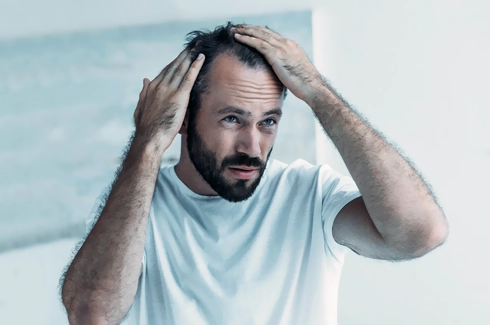

Creatine is a substance that is found naturally in muscle cells. It is produced naturally by our liver, pancreas, and kidneys.
A person can also get creatine for diet by consuming red meat and fish. It also helps your muscles produce energy during heavy lifting or high-intensity exercise.
Taking creatine as a supplement is very popular with athletes and bodybuilders to gain muscle, increase strength and improve exercise performance.
Creatine is stored as phosphocreatine in our skeletal muscles. This can be broken down later during physical activity to be used as energy for muscle contractions.
When we take creatine supplements, the more creatine we have in our muscles. Due to this increase in creatine levels, our muscles can produce more energy.
For this reason, some people take creatine to increase their muscle mass and improve athletic performance. Creatine supplements can be found in a variety of forms, including powders, liquids, and tablets.
The scientific definition of a steroid is any compound that has a common structural feature, four associated cycloalkane rings; Specifically, 3 cyclohexane rings and a cyclopentane ring form the structure that defines a steroid molecule.
In more simple words; it usually refers to compounds that are anabolic (tissue building) in nature and are related to hormones. This includes injectable testosterone (with conjugates such as ethanate or cypionate) or compounds that affect testostereone, like Dianabol (methandrostenelone) or Winstrol (stanozolol).
In simpler words; it usually refers to compounds that are anabolic (tissue building) in nature and are related to hormones. This includes injectable testosterone (with conjugates like ethanate or cypionate) or compounds that affect testosterone, such as Dianabol (methandrostenelone) or Winstrol (stanozolol).
Steroids, also called corticosteroids, are anti-inflammatory drugs used to treat a range of conditions.
Anabolic steroids, also known more accurately as anabolic-androgenic steroids, are steroidal androgens that contain natural androgens such as testosterone as well as synthetic androgens that are structurally related and have testosterone-like effects.
By all definitions, creatine is not a steroid. It has no relation to a steroid structurally or in its actions.
Creatine is a tripeptide compound, made up of three amino acids (L-arginine, L-glycine, and L-methionine),it does not possess the steroid backbone and it is not illegal nor does it influence hormones nearly as much as the above mentioned ‘steroid’ compounds.
While creatine itself may not directly lead to hair loss but it may affect the levels of a hormone that does, which is called dihydrotestosterone (DHT).
We can not say creatine directly causes hair loss but a study made in 2009, did find that creatine supplementation is associated with an increase in a hormone called dihydrotestosterone (DHT) which can contribute to hair loss.
DHT is a male steroid hormone that’s derived from another hormone that is more known — testosterone. DHT is also more strong than testosterone.
As same as creatine; steroids also are thought to create male hair loss by causing the body to produce higher levels of dihydrotestosterone (DHT).
We can say having too much DHT in the body is one of the causes of baldness in men.
Hair follicles have their own life cycle. The hair growth phase is followed by a resting phase and then the hair falls out.
DHT can bind to certain hormone receptors in hair follicles. This can lead to shorter hair growth cycles and thinner and shorter hair. Since there is less hair growth, more hair falls out than was replaced.
DHT can act on the scalp and may put strain on the hair and cause it to weaken over time. This eventually causes the hair follicles on the scalp to die and stop growing back, which results in baldness.
Androgenic Alopecia, or more commonly known as Male Pattern Baldness, is a specific hair loss condition in men associated with male sex hormones, specifically Testosterone. This condition is atypically a genetic outcome associated with Dihydrotestosterone hormone or DHT levels. As shown by the studies, the higher quantity of DHT in the hair follicle growth, tend to affect the life cycle of hair growth and even new hair growth. Though hair growth stops, hair follicles stay there in hibernated form, which keeps the possibility of future regrowth.
Additionally, some people have a genetic predisposition to hair loss. Variations in a gene called AR can cause increased activity of hormone receptors found in hair follicles. Also, the enzyme that converts testosterone to DHT may be a more active Safe Source in people with hair loss.
As a result; both creatine and anabolic steroids can affect DHT levels, which are known to play a role in hair loss in predisposed men. However, more research is needed on creatine’s effect on DHT levels. More research should be done to evaluate whether the increases in DHT due to creatine supplementation are sufficient to promote hair loss.
As we have seen above, creatine supplementation nor anabolic steroids does not directly cause hair loss but definitely effect the DHT levels and hormones which is very important in hair loss reasons. If you are experiencing hair loss, you should make an appointment with your doctor.
I visited Dr Civas’ Hair Transplangt Center twice; first time in 2021 and recently in February 2023. I was referred to the clinic by a friend who had a great experience a{...}
12.08.2023I have just had a hair transplant and am amazed by the professionalism and super service, from the first contact to the operation and following checkups. Everyone has bee{...}
07.09.2023The trip to Ankara and the clinic was great. The clinic staff was friendly and took good care of me throughout the trip. A little over a year has passed since the operati{...}
07.09.2023